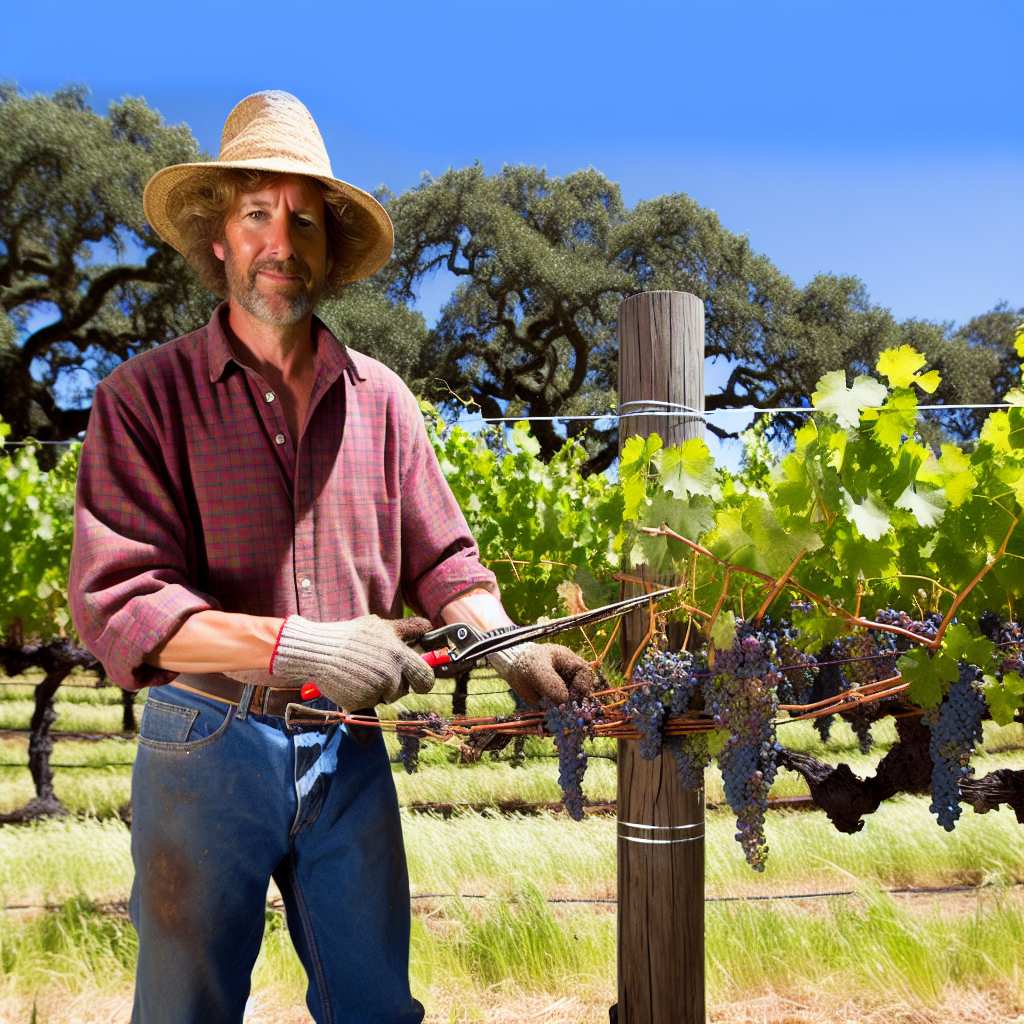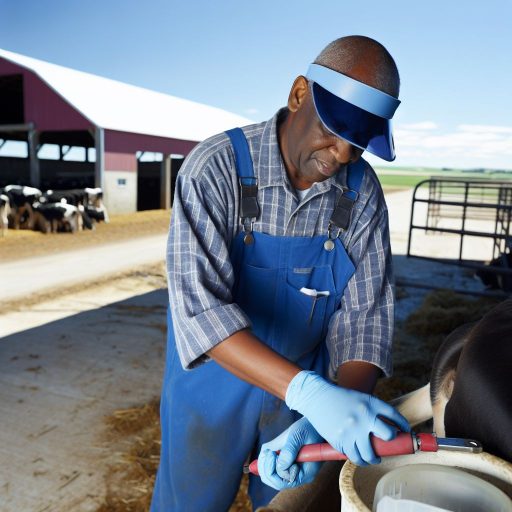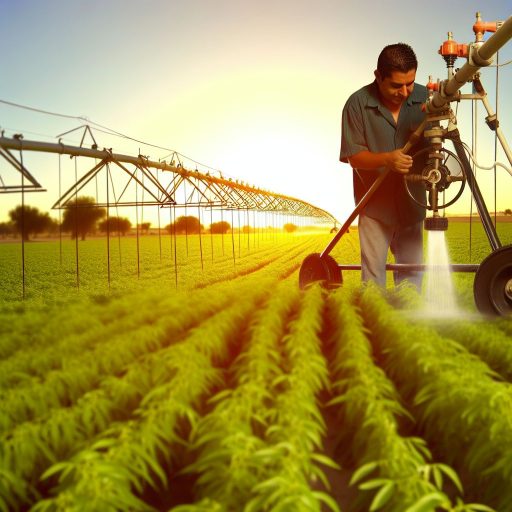Introduction
Exploring the impact of climate on grape cultivation is essential to the success of vineyards.
Understanding weather patterns and temperature fluctuations is crucial for ensuring optimal grape growth.
Climate factors play a significant role in determining the quality and quantity of grapes produced.
By recognizing the influence of weather on grape cultivation, farmers can make informed decisions to support a thriving harvest.
Climate Factors in Grape Cultivation
When it comes to grape cultivation, several climate factors play a vital role in determining the success of the crop.
This section will take a closer look at these factors.
Temperature
Temperature is one of the most crucial factors in grape cultivation.
Grapes thrive in moderate climates with warm days and cool nights.
Extreme temperatures, either too hot or too cold, can damage grapevines.
These extremes affect fruit development.
The ideal temperature range for grape cultivation is between 50-90°F.
Rainfall
Rainfall is another important factor that significantly affects grape cultivation.
Grapes require a sufficient amount of water to grow and develop properly.
However, excessive rainfall can lead to waterlogged soil.
This waterlogging can cause root damage and disease.
On the other hand, drought conditions can stress grapevines.
This stress reduces fruit quality.
Humidity
Humidity levels also impact grape cultivation.
High humidity can create favorable conditions for fungal diseases.
Diseases like mildew and botrytis can damage grape clusters.
Transform Your Career Today
Unlock a personalized career strategy that drives real results. Get tailored advice and a roadmap designed just for you.
Start NowConversely, low humidity levels can lead to dehydration of the grapes.
This dehydration affects their quality and taste.
Maintaining balanced humidity levels is essential for optimal grape growth.
Sunlight
Sunlight is crucial for grape cultivation.
It plays a key role in photosynthesis.
Photosynthesis is essential for grapevine growth and fruit development.
Adequate sunlight exposure helps grapes ripen properly.
It also helps develop sugars and achieve optimal flavors.
Lack of sunlight can slow down grape ripening.
This lack can result in poor fruit quality.
In summary, climate factors such as temperature, rainfall, humidity, and sunlight are critical considerations in grape cultivation.
By understanding how each factor can influence grape growth and quality, farmers can make informed decisions.
These decisions help optimize their grape production and ensure a successful harvest.
Effects of temperature on grape cultivation
Temperature affects the growth of grapevines.
- Impact of temperature on grape phenology and ripening
- Discussion of ideal temperature ranges for different grape varieties
Impact of temperature on grape phenology and ripening
The temperature plays a crucial role in determining the phenology of grapevines.
Temperature influences the timing of bud break, flowering, veraison, and harvest in grapevines.
The rate of sugar accumulation, acidity, color development, and flavor of grapes are also affected by temperature.
A warmer temperature can accelerate phenological stages, leading to earlier ripening and harvest dates.
Discussion of ideal temperature ranges for different grape varieties
Different grape varieties have specific temperature requirements for optimal growth and development.
Showcase Your Business Today
Reach thousands of readers actively exploring professional services. Publish your business profile and grow your audience now.
Publish NowFor example, cool-climate grape varieties such as Pinot Noir and Riesling thrive in cooler temperatures.
These varieties require temperatures between 50-70°F during the growing season to achieve the best quality.
Warm-climate varieties like Cabernet Sauvignon and Syrah prefer temperatures between 70-85°F.
Excessive heat can negatively impact grape quality by increasing sugar levels too quickly and decreasing acidity levels.
Temperature plays a critical role in grape cultivation, affecting phenology, ripening, and grape quality.
Growers must carefully monitor and manage temperature conditions to ensure the best possible grape production and quality.
Delve into the Subject: The Ethics of Insect Research: What You Need to Know
Importance of Adequate Rainfall for Grape Growth and Development
Adequate rainfall is essential for grapevines as it provides the necessary moisture for their growth and development.
Grapes need water to carry out photosynthesis, which is vital for their survival.
During the growing season, grapevines require consistent and moderate rainfall to ensure healthy fruit development.
Insufficient rainfall can lead to stress on the vines, resulting in stunted growth and poor fruit quality.
Proper irrigation and adequate rainfall help grapes reach their full potential, producing juicy, flavorful berries that are essential for making quality wines.
Water stress during critical growth stages can impact the taste and aroma of the grapes.
Explanation of the Risks of Excessive Rainfall or Drought on Grape Crops
While rainfall is crucial for grape cultivation, excessive rainfall can pose risks to grape crops.
Heavy rains can lead to waterlogged soils, causing root rot and nutrient leaching, which can affect the health of grapevines.
Excessive rainfall can also increase the risk of fungal diseases, such as powdery mildew and downy mildew.
These diseases can devastate grape crops if not properly managed.
Wet conditions promote the spread of diseases, impacting grape quality and yield.
On the other hand, drought can also have detrimental effects on grape crops.
Insufficient rainfall can lead to water stress, affecting the growth and development of grapevines.
Drought conditions can result in smaller berries and reduced yield.
During drought periods, grape growers may need to rely on irrigation to ensure the survival of their crops.
Without adequate water, grapevines may struggle to produce flavorful grapes, impacting the quality of wines produced from the harvest.
Learn More: How to Network in the Conservation Science Field
Influence of Humidity on Grape Production
High humidity levels can impact disease susceptibility in grape plants.
The excess moisture in the air creates the perfect environment for fungal diseases to thrive.
- Increased risk of powdery mildew: Powdery mildew is a common fungal disease that affects grapevines in high humidity conditions. It can damage leaves, stems, and fruit, impacting the overall health of the plant.
- Susceptibility to downy mildew: Downy mildew is another fungal disease that thrives in humid environments. It can cause leaf discoloration, reduce photosynthesis, and affect the quality of grapes.
- Potential for botrytis bunch rot: Botrytis bunch rot is a fungal disease that affects grape clusters, causing them to rot and reducing yield. High humidity levels create the ideal conditions for botrytis to develop.
Strategies for Managing Humidity Levels in Vineyards
- Pruning and canopy management: Proper pruning and canopy management techniques can help increase airflow within the vineyard, reducing humidity levels and minimizing the risk of fungal diseases.
- Monitoring weather conditions: Regularly monitoring weather conditions, including humidity levels, can help growers anticipate and prepare for potential disease outbreaks. Utilizing weather monitoring tools can provide real-time data for decision-making.
- Implementing cultural practices: Adopting cultural practices such as spacing vines properly, avoiding over-irrigation, and promoting good drainage can help regulate humidity levels in vineyards and reduce the risk of disease.
- Applying fungicides: In cases where humidity levels cannot be controlled effectively, growers may need to resort to applying fungicides to protect grape plants from fungal diseases. It is essential to follow proper application guidelines and schedules.
Managing humidity levels in vineyards is crucial for maintaining grape health and maximizing yield.
By understanding the impact of humidity on grape production and implementing appropriate strategies, growers can mitigate the risks associated with high humidity conditions.
Delve into the Subject: Case Studies of Successful Agricultural Policies

Importance of Sunlight in Grape Cultivation
When it comes to grape cultivation, the importance of sunlight in the ripening process cannot be overstated.
Let’s delve into the role that sunlight plays in the development of grapes.
Sugar Accumulation and Flavor Development
Sunlight is essential for grapevines to undergo photosynthesis.
This process converts sunlight into sugars.
As grapes ripen, they accumulate sugars, which is crucial for achieving the desired sweetness in the fruit.
In addition to sugar accumulation, sunlight plays a significant role in flavor development in grapes.
The sugars produced during photosynthesis contribute to the unique flavors found in different grape varieties.
Effects on Grape Skin Thickness and Tannin Levels
Sun exposure is directly linked to the thickness of grape skins.
Grapes that receive adequate sunlight tend to have thicker skins.
This can impact the overall quality of the fruit.
Showcase Your Business Today
Reach thousands of readers actively exploring professional services. Publish your business profile and grow your audience now.
Publish NowThicker skins are desirable in wine production as they contain higher levels of tannins.
Tannins are compounds found in grape skins that contribute to the structure, complexity, and aging potential of wines.
Therefore, the amount of sun exposure that grapes receive can influence both the skin thickness and tannin levels in the fruit.
Sunlight is a critical factor in grape ripening.
It has significant implications for sugar accumulation, flavor development, skin thickness, and tannin levels.
Grape growers must carefully manage sun exposure in their vineyards.
This care ensures optimal ripening and quality in their grapes.
Learn More: How to Start a Career in Agricultural Biotechnology
Adaptation strategies for climate change
As the impacts of climate change continue to affect grape cultivation, it is crucial for vineyard owners and farmers to implement adaptation strategies to mitigate the potential challenges.
Here, we will explore some key techniques that can be employed to adapt to changing climatic conditions:
Overview of potential challenges in grape cultivation due to climate change
- Shifts in temperature and weather patterns leading to unpredictable growing seasons
- Increased occurrence of extreme weather events such as droughts, floods, and heatwaves
- Risk of pest and disease outbreaks due to changing environmental conditions
- Changes in soil quality and water availability affecting grape production
These challenges pose a significant threat to grape cultivation and require proactive measures to ensure the sustainability of vineyards in the face of climate change.
Discussion of adaptation techniques
- Changing grape varieties: One effective adaptation strategy is to cultivate grape varieties that are more resilient to the impacts of climate change. By selecting grape varieties that can thrive in changing conditions, vineyard owners can enhance the resilience of their crops.
- Modifying planting locations: Another adaptation technique involves changing the planting locations of grapevines to regions that are better suited to the new climate conditions. This may include moving vineyards to higher altitudes or cooler microclimates to maintain optimal growing conditions.
- Implementing sustainable farming practices: Sustainable farming practices, such as organic farming methods and water-efficient irrigation systems, can help reduce the environmental impact of grape cultivation and increase the resilience of vineyards to climate change.
- Utilizing technology: Advancements in technology, such as precision agriculture techniques and data-driven decision-making tools, can help vineyard owners monitor and manage their crops more effectively in response to changing climatic conditions.
- Collaborating with researchers and experts: Building partnerships with researchers, agronomists, and other experts in the field of viticulture can provide valuable insights and guidance on implementing adaptation strategies tailored to specific challenges faced by grape growers.
By actively implementing these adaptation techniques, vineyard owners and farmers can enhance the resilience of grape cultivation to climate change and ensure the long-term sustainability of their vineyards.
Impact of Climate on Grape Cultivation
Grape cultivation is heavily dependent on climate conditions.
The temperature during different seasons affects grape growth.
Excessive heat can lead to sunburned grapes and reduced yield.
On the other hand, frost can damage grapevines and destroy crops.
Rainfall plays a crucial role in grape development.
Too much rain can cause diseases like mildew and rot.
Drought conditions can stress grapevines and reduce grape quality.
Humidity also impacts grape cultivation, affecting grape flavor.
Overall, climate variations directly influence grape production outcomes.
It is important for grape growers to adapt to changing climatic conditions.
Increased research is needed to develop sustainable grape cultivation practices.
Implementing water-efficient techniques can help mitigate climate impacts.
Climate significantly affects grape cultivation practices and outcomes.
Further research and sustainable practices are essential for future grape production.
Additional Resources
Extreme heat effects on perennial crops and strategies for sustaining …
UMES researcher addresses impact of climate change on grapevines
[E-Books for Sale]
The Big Book of 500 High-Paying Jobs in America: Unlock Your Earning Potential
$19.99 • 500 High-Paying Jobs • 330 pages
Explore 500 high-paying jobs in America and learn how to boost your career, earn more, and achieve success!
See All 500 High-Paying Jobs of this E-Book
1001 Professions Without a Degree: High-Paying American Jobs You Can Start Now
$19.99 • 1001 Professions Without a Degree • 174 pages
Discover 1001 high-paying jobs without a degree! Unlock career tips, skills, and success strategies for just $19.99!




